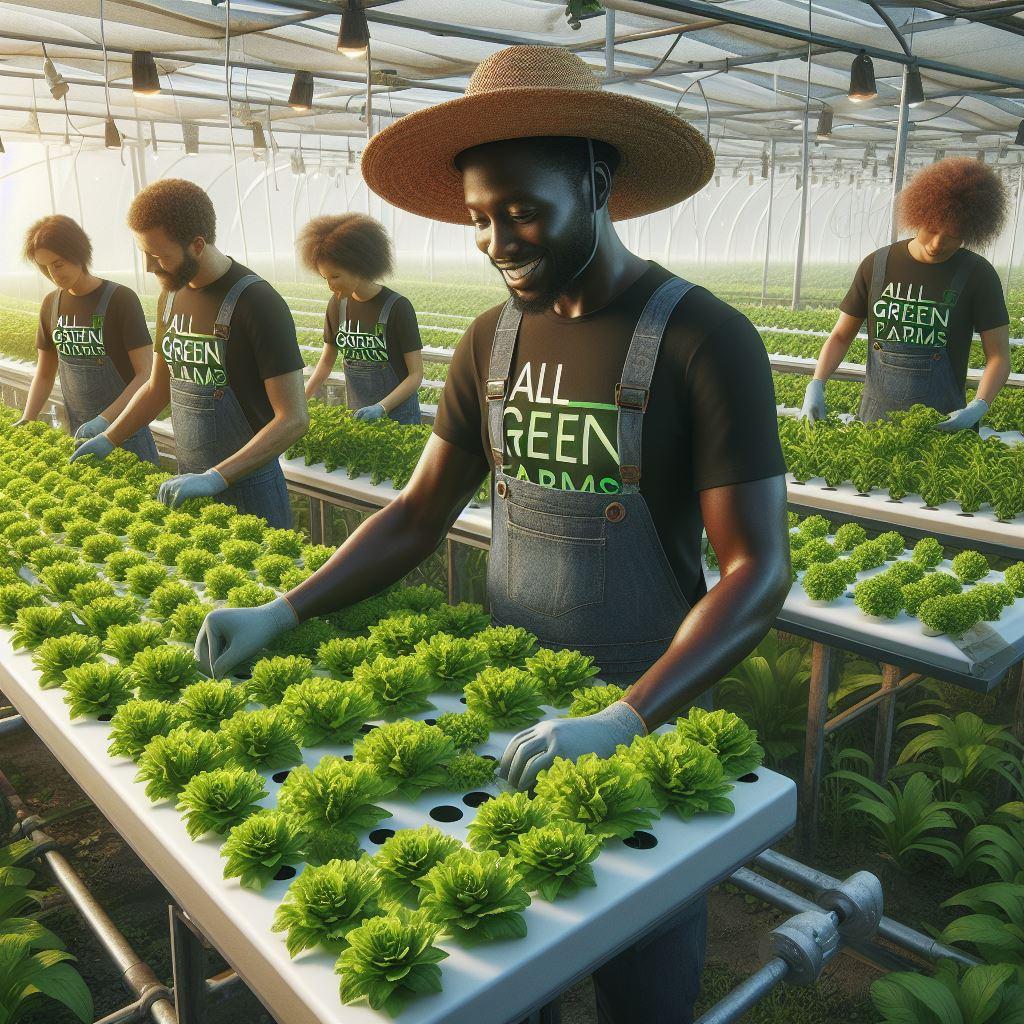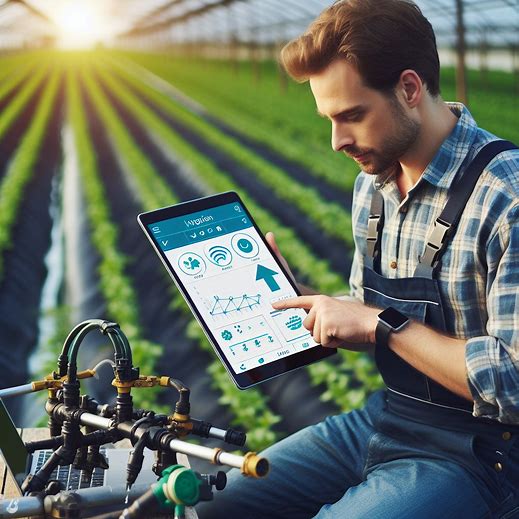Technology is transforming the world of agriculture in 2024. From precision farming to blockchain, farmers are adopting innovative solutions to optimize their operations, increase their yields, and protect the environment. In this comprehensive guide, we will explore how technology is playing a pivotal role in modern farming, and what are the latest trends, tools, and strategies you need to know to succeed in the digital era of agriculture.
What is Technology in Modern Farming?
Technology in modern farming is the use of various devices, systems, and software to collect, analyze, and apply data to improve farming practices and outcomes. Technology can help farmers to:
- Monitor and manage their crops and livestock more efficiently and effectively
- Optimize their resource allocation and utilization
- Enhance their crop quality and quantity
- Reduce their environmental impact and carbon footprint
- Increase their profitability and sustainability
- Technology can also help farmers to connect with other stakeholders in the agricultural value chain, such as suppliers, buyers, and consumers, and ensure transparency, traceability, and trust.
What are the Benefits of Technology in Modern Farming?
Technology in modern farming can bring many benefits to farmers, such as:
- Saving time and labour: Technology can automate and streamline various farming tasks, such as planting, watering, harvesting, and storing, and reduce the need for manual labour and human intervention.
- Saving money and resources: Technology can help farmers to use their inputs, such as water, fertilizer, and pesticides, more efficiently and precisely, and reduce their wastage and costs.
- Improving decision making and problem solving: Technology can provide farmers with real-time and accurate data and insights on their crops and fields, and help them to make informed decisions and solve problems quickly and effectively.
- Enhancing productivity and profitability: Technology can help farmers to increase their crop yields and quality, and improve their market access and competitiveness, and ultimately boost their income and profitability.
- Promoting sustainability and resilience: Technology can help farmers to adopt more sustainable and eco-friendly practices, such as reducing greenhouse gas emissions, conserving water and soil, and enhancing biodiversity, and also improve their resilience to climate change and other risks and challenges.
What are the Types of Technology in Modern Farming?
Technology in modern farming can be classified into different types, depending on their functions and applications. Some of the main types of technology in modern farming are:
Precision agriculture: This type of technology uses GPS, drones, sensors, and other devices to collect and analyse data on various parameters, such as soil moisture, nutrient levels, crop health, and weather conditions, and enable farmers to apply the right amount of inputs, such as water, fertilizer, and pesticides, to each plant or plot, and optimize their resource usage, crop yields, and sustainability.
Smart farming: This type of technology uses automated and interconnected systems, such as smart irrigation, smart planting, and smart harvesting, to streamline and optimize the entire farming process, from seed to harvest, and reduce manual labour, human error, and operational costs.
Internet of Things (IoT) in agriculture: This type of technology uses smart sensors and devices that are connected to the internet and each other, and provide farmers with a wealth of data and information on their crops and fields, and enable them to monitor and manage their farms remotely and in real-time, and improve their crop management and resource utilization.
Digital livestock management: This type of technology uses wearable devices, such as health trackers and ear tags, and smart systems, such as smart feeding and smart milking, to monitor and manage the health and welfare of animals, and optimize their nutrition, reproduction, and productivity, and also contribute to more sustainable and ethical farming practices.
Farm management software: This type of technology uses software and applications that help farmers to plan, organize, and control various aspects of their farm, such as crop planning, financial analysis, inventory management, and market access, and empower them to make informed decisions, maximize their productivity, and stay ahead of industry trends.
Sustainable agriculture technologies: This type of technology uses solutions that are designed to minimize the environmental impact and enhance the sustainability of farming, such as solar-powered equipment, water-saving irrigation systems, biodegradable packaging, and organic farming methods, and help farmers to conserve natural resources, reduce greenhouse gas emissions, and contribute to a greener future.
Robotics in farming: This type of technology uses robots and machines that can perform various farming tasks, such as autonomous tractors, robotic weeders, and drone pollinators, and help farmers to increase their efficiency, accuracy, and safety, and reduce their reliance on manual labour and human intervention.
Blockchain in agriculture: This type of technology uses a distributed ledger system that records and verifies transactions and data in a secure and transparent way, and helps farmers to enhance traceability, ensure food safety, and build trust between farmers and consumers, and also revolutionize the way we understand and consume food.

How to Use Technology in Modern Farming in 2024?
Technology in modern farming is not a one-size-fits-all solution. Different types of technology have different functions, benefits, and challenges, and may not be suitable or available for every farmer or situation. Therefore, farmers need to consider various factors, such as their goals, needs, resources, and capabilities, before choosing and using technology in modern farming.
Some of the steps that farmers can follow to use technology in modern farming in 2024 are:
Assess your current situation and identify your problems and opportunities: The first step is to evaluate your current farming practices and performance, and identify the areas where you need improvement or innovation. For example, you may want to increase your crop yields, reduce your input costs, or improve your environmental impact.
Research and explore the available and relevant technologies: The next step is to research and explore the different types of technology that are available and relevant for your farming needs and goals. For example, you may want to use precision agriculture to optimize your resource usage, smart farming to streamline your farming process, or blockchain to ensure transparency in your supply chain.
Compare and select the best technologies for your situation: The third step is to compare and select the best technologies for your situation, based on various criteria, such as cost, benefit, feasibility, compatibility, and scalability. For example, you may want to choose the technologies that are affordable, effective, easy to use, compatible with your existing systems, and scalable to your future needs.
Implement and monitor the technologies in your farm: The fourth step is to implement and monitor the technologies in your farm, and ensure that they are working properly and delivering the expected results. For example, you may want to install and test the devices and systems, train yourself and your staff, and track and measure the outcomes and impacts.
Evaluate and improve the technologies in your farm: The final step is to evaluate and improve the technologies in your farm, and make adjustments and improvements as needed. For example, you may want to analyze and review the data and feedback, identify and solve any issues or challenges, and update or upgrade the technologies as required.
Conclusion
Technology is shaping the future of farming in 2024. From precision agriculture to blockchain, technology is helping farmers to optimize their operations, increase their yields, and protect the environment. In this comprehensive guide, we have explored how technology is playing a pivotal role in modern farming, and what are the latest trends, tools, and strategies you need to know to succeed in the digital era of agriculture.
We hope this guide has given you some valuable insights and tips on how to use technology in modern farming in 2024, you may share this post to your friends and family, so that they may learn too. If you have any questions or feedback, feel free to leave a comment below or contact us directly. We would love to hear from you and help you with your farming needs.
Thank you for reading and happy farming! 😊



